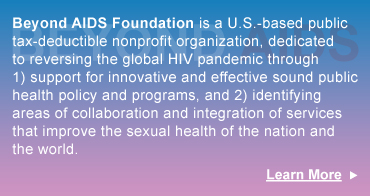Commentary: The Difficult Task of Targeting Public Health Messages to Those Who Need Them
One of the most difficult things to do in the field of public health is to target a health message to a particular target population at special risk for a health condition, using media also accessible to the general public. Inevitably, some members of the target population will feel that the attention, the images used, or the message reflects negatively on them when seen by others outside the group.
The problem is the more tricky if the ads/messages are provocative, and especially if the population involved has been on the receiving end of prejudice and persecution in the past, leading to heightened sensitivities. Yet targeted health education is highly appropriate and cost-effective, because most diseases are not evenly distributed in the population. And provocative messages and images are also important, because only they may be capable of achieving the intended attention.
American society is so homogeneous that it is difficult to reach any sub-population without using the English language and media also accessible to others. For immigrant groups who speak a language not known to most Americans, messages can be limited to that language, but only at the price of missing younger generations who may not speak or read it.
In the case of HIV/AIDS education, this challenge has had to be faced from the beginning, because the disease has been concentrated in one minority group after another, most of whom have been traditional subjects of discrimination. Much of the opposition to name-based reporting, partner notification, and routine testing that Beyond AIDS and allied groups have faced has had a basis in fears within the gay community of stigmatization. It has been difficult to design posters, ads, etc. aimed at gay audiences without complaints that gays are being tarred with the brush of association with AIDS.
Today a similar problem faces those who hope to increase awareness of the high incidence of new HIV infections in the African American community. The use of African American ad professionals and focus groups to design and select the best images and messages will certainly help, but controversy is inevitable.
This phenomenon is not limited to HIV/AIDS, however, any more than it is to gays, drug users, or blacks. One public health effort that has had only limited success is to encourage Jews to be screened for Tay-Sachs disease, a hereditary condition most common among Jews of Ashkenazic (mostly Central and Eastern European) origin, because of generations of intramarriage. If one were to develop a poster or TV ad for such a campaign, one would naturally select typical Jewish faces, leading to complaints of stereotyping. Some Jews would also object to the bad image implicit in linking their religio/ethnic group with a birth defect. Because of such problems, this campaign has faced ongoing challenges.
All of this reminds me of an experience I had in medical school. I did an elective in public health in Vancouver, B.C., Canada. The provincial chief of sexually transmitted disease control showed me a poster that had been developed to attract attention to the risks of STDs faced by young people in the province. It depicted a pretty young woman standing by a lamp post, and the written message said something about the fact that pick-ups may have V.D. The model selected happened to be a redhead, a member of a group not known up to that time by provincial public health officials to be a sensitive minority group.
The poster had elicited a fury! Redheaded citizens wrote letters of protest to the newspapers. Other citizens called in, angry about the dispersions the poster might cast upon the young women of B.C. in general. There were also angry complaints that young men are at least as much a risk and should have been depicted in similar posters. But the STD Director chuckled and said that the verdict ultimately was that the poster had been a great success. It had achieved more attention and more public discussion about STD risk than anything they had issued up to that time.
So my suggestion is that, as we try to develop awareness campaigns for the African American and other communities affected disproportionately by the HIV/AIDS epidemic, we do our best to be tasteful, to test our messages using focus groups, and to avoid unnecessarily pushing buttons that detract from the messages and might have an opposite effect to that intended. But, having done that, we should not fear to be provocative enough to obtain the attention necessary to cause people to take notice and think, and we should not fear controversy. To do so might be tantamount to fearing to be effective.
Ronald P. Hattis, MD, MPH
President, Beyond AIDS Foundation
![]() Return to Archived Articles and Letters
Return to Archived Articles and Letters

